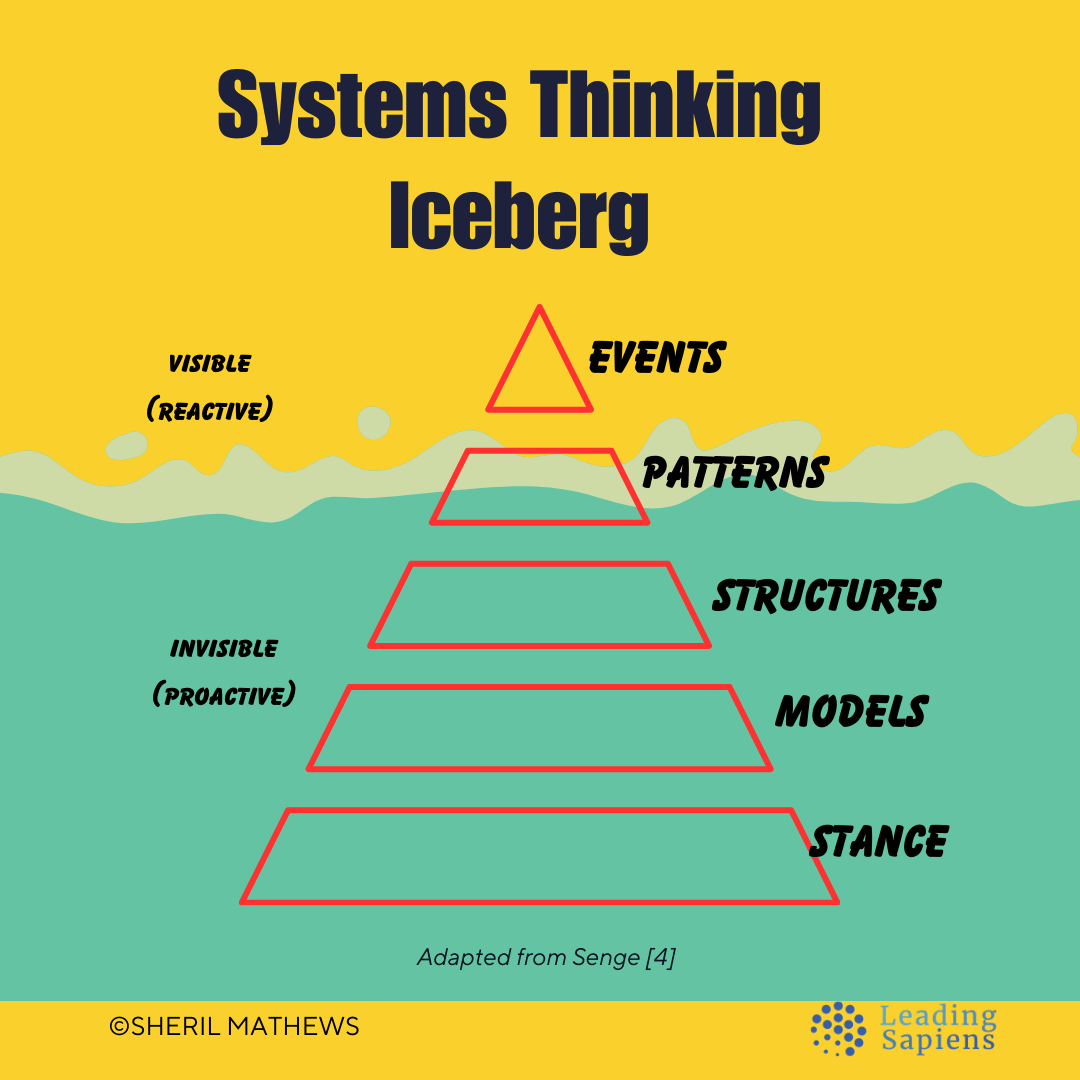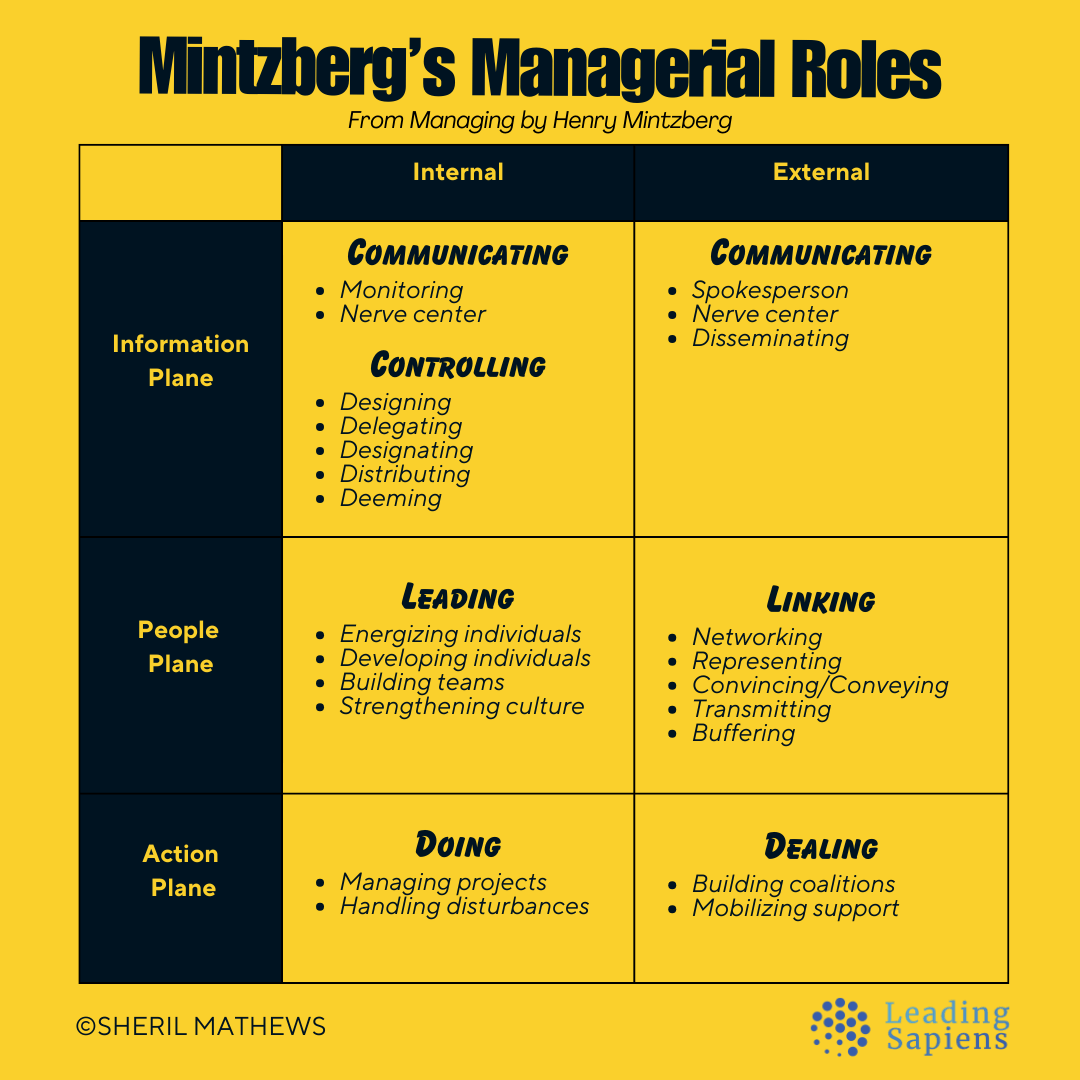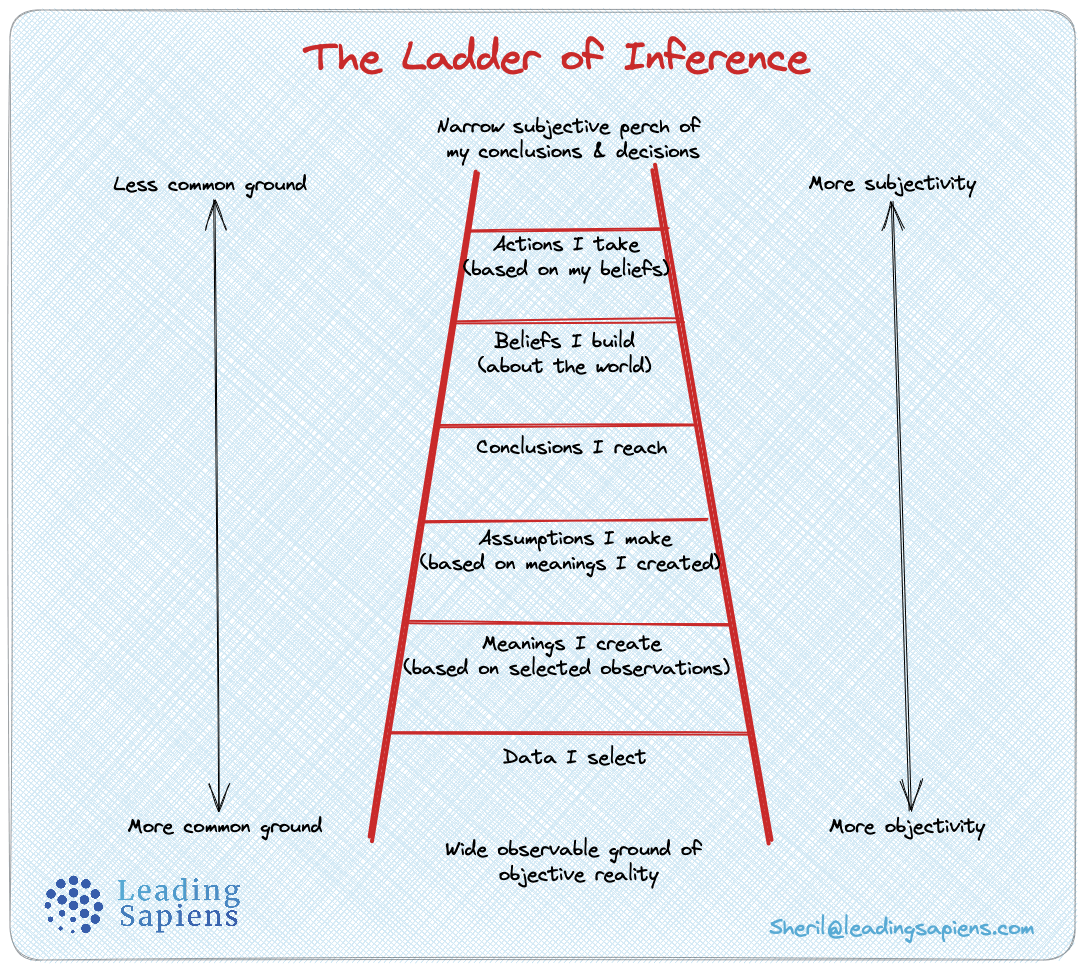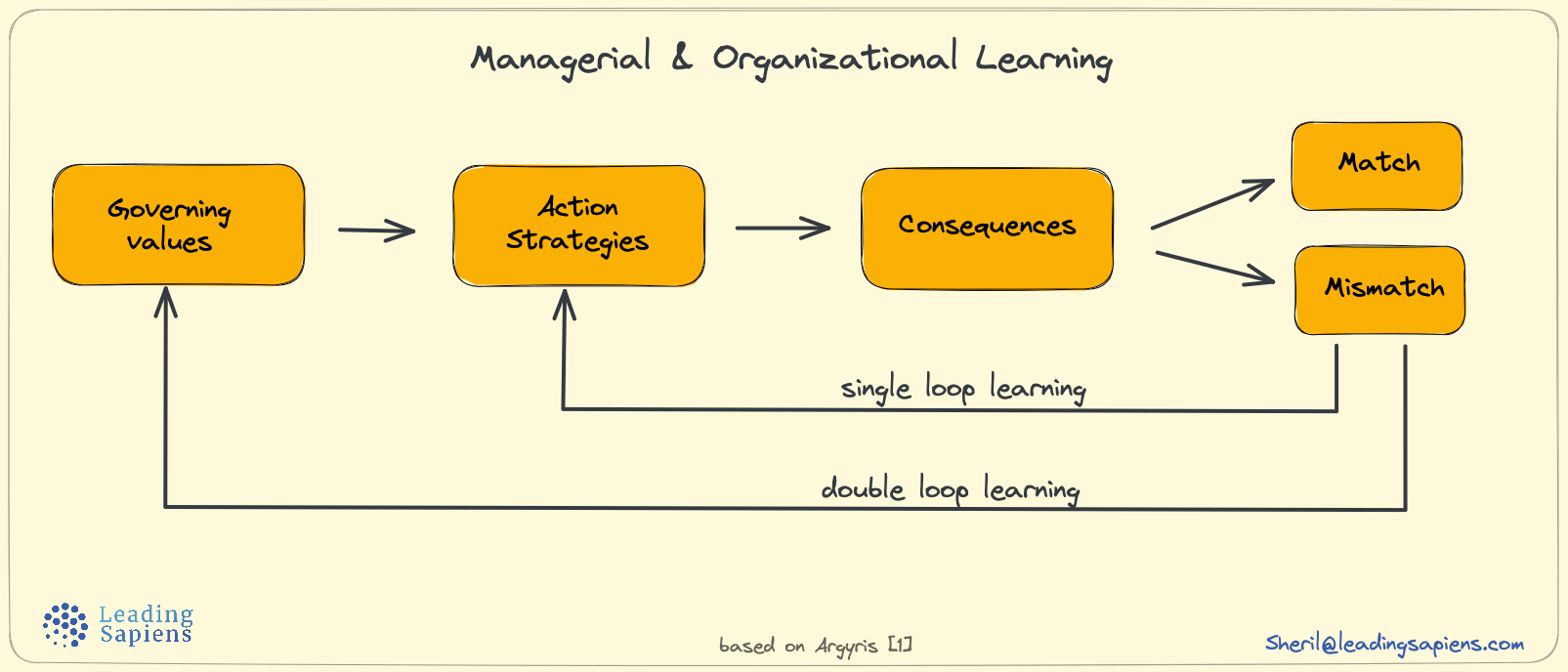Why do some people thrive in complexity while others buckle under pressure? A key factor is the level of cognitive flexibility. In this piece, I examine what cognitive flexibility means, why it’s critical to leadership, and strategies for building it.
A World Economic Forum's Future of Jobs Report ranked cognitive flexibility among the top 10 skills critical for professional success. In a study of global executives during the COVID-19 crisis, leaders with higher cognitive flexibility were more effective at navigating uncertainty and rapid organizational change.
Despite its importance, cognitive flexibility – the ability to adapt and shift perspectives in response to changing situations – remains an undervalued leadership capability.
In my work with leaders, what many describe as 'being overwhelmed' or 'not having enough time' often masks a deeper issue - underdeveloped cognitive flexibility. While traditional stress management techniques have their place, they often treat the symptoms rather than the root cause.
Strengthening cognitive flexibility helps you navigate complexity without feeling overwhelmed. Instead of being paralyzed by competing demands, you can shift mental gears smoothly, seeing multiple paths forward where others see obstacles.
It's the difference between coping with stress and fundamentally changing how you respond to challenges.
What is Cognitive Flexibility?
A primary aim of leadership coaching is to develop your cognitive flexibility. Like a mental gymnast, someone with high cognitive flexibility can move between different ways of thinking, see situations from multiple angles, and adjust their approach as circumstances change.
Cognitive flexibility includes:
1. Perspective shifting: Viewing situations from different angles, understanding others' positions during disagreements, and considering various solutions to complex problems.
2. Adaptive thinking: Adjusting approaches based on context and deploying diverse strategies as situations change while remaining receptive to new information.
3. Cognitive inhibition: Suppressing automatic and habitual responses to respond thoughtfully rather than reverting to ingrained patterns and mental shortcuts.
4. Mental agility: Simultaneously handling and manipulating different ideas. For example, balancing competing demands and switching between short and long-term perspectives.
5. Cognitive reappraisal: The technique of reframing situations, framing challenges as learning opportunities, and adapting novel perspectives to enhance understanding.
6. Divergent thinking: Generating unique ideas and approaching challenges creatively.
7. Emotional regulation: A degree of comfort with uncertainty. This helps regulate emotions for clearer thinking and better decision-making under pressure.
In practice, cognitive flexibility is both a mindset and a set of behaviors.
The critical role of cognitive flexibility in leadership
Leadership today demands more than traditional management skills. It requires a nimble mind capable of adapting to rapid changes, balancing competing priorities, and making decisions with incomplete information.
Cognitive flexibility plays a crucial role in how leaders respond to the intense pressures of their roles. Without cognitive flexibility, these pressures can lead to overwhelm, poor decision-making, and burnout.
Why cognitive flexibility matters in leadership
- Navigating complexity: Leaders with high cognitive flexibility can more effectively manage their role’s complexities. They can see multiple perspectives, consider various solutions, and adapt their approach as situations evolve.
- Decision-making: Leaders often need to make quick decisions. Cognitive flexibility allows you to rapidly process new information, consider alternative viewpoints, and make informed choices.
- Fostering learning and psychological safety: By being open to new ideas and approaches, cognitively flexible leaders help drive innovation. They're more likely to encourage creative thinking and embrace novel solutions.
- Building resilience: Leaders who reframe challenges and adapt their thinking are better equipped to handle setbacks. This resilience is crucial for long-term success and preventing burnout.
- Improving relationships: Cognitive flexibility helps to understand and empathize with diverse perspectives, crucial for effective team management and conflict resolution.
Impact of cognitive flexibility on leadership effectiveness
Research shows that leaders with higher cognitive flexibility are more effective in key areas:
- Managing change: They're better able to guide their teams through organizational changes and market shifts.
- Thinking strategically: They can balance short-term needs with long-term vision, adapting strategies as needed.
- Crisis leadership: During unexpected challenges, they can quickly adjust plans and maintain team morale.
- Stakeholder management: They're better at managing diverse stakeholder expectations and finding mutually beneficial solutions.
Developing cognitive flexibility is not just about managing stress; it's about fundamentally changing how you interact with the complex demands of leadership.
Strategies for building cognitive flexibility
What follows are some key frameworks and strategies to build cognitive flexibility in leadership. Many challenge the conventional understanding of effective leadership and offer alternate approaches better suited to complex environments.
Each idea links to a longer piece that delves further into each framework.
Bolman Deal 4 frames
The Bolman-Deal 4 frame model of leadership examines organizations from four distinct lenses: structural frame, symbolic frame, political frame, and the human resource frame. Each frame highlights different aspects and reveals a unique way to analyze and address challenges. They offer a multidimensional approach to view your challenges differently.

Advocacy and inquiry
Advocacy and inquiry represent the dual sides of effective communication — asserting your perspective while also genuinely understanding others. Mastering this balance is crucial to productive dialogue that advances understanding and better decision-making.

The value of being naive
Approaching challenges with a sense of cultivated naiveté can unlock innovative thinking that experts overlook. Adopting and maintaining a fresh, beginner's mindset is a powerful tool in leadership and can lead to more creative problem-solving.

Humble inquiry
Effective leaders ask questions — not just to gather information, but to foster trust and engagement. A great start is Edgar Schein’s framework of humble inquiry. It means genuinely valuing others’ input and building collaborative relationships rather than transactional.

Systems thinking iceberg
The iceberg model from systems thinking helps uncover organizational issues. This tool helps leaders move beyond immediate events to identify patterns, structures, and mental models that shape outcomes.

Locus of control
Understanding whether control is internally or externally driven – locus of control – impacts your leadership style. Leaders who believe they can influence outcomes tend to be more proactive and effective. Related ideas are the circle of control and the Stoic dichotomy of control.

Mintzberg's managerial roles
Mintzberg’s management framework identifies the different roles a leader must navigate — informational, interpersonal, and decisional. Recognition and awareness of these different roles enables cognitive flexibility. It is essential to effectively switch between them based on situational demands.

Organizational metaphors
Varying organizational metaphors can provide fresh insights into organizational behavior. Viewing an organization as a machine, a culture, or a political system offers unique perspectives for solving challenges. Gareth Morgan identified eight types of organizations, each with its own unique set of characteristics.

Aristotle’s ethos, pathos, and logos
A common mistake by leaders is to focus too much on logic (logos) and forget the other equally important aspects of credibility(ethos) and emotional engagement (pathos). You have to balance all three – ethos, pathos, and logos – based on the context. At the same time, you won’t get far without enough ethos to ground you.

Ladder of inference
The Ladder of Inference shows the different steps (often invisible) in how we reach conclusions. By slowing down your decision-making process, this tool helps identify bias and enables a more objective understanding.

Double-loop learning
Double-loop learning encourages leaders to question underlying assumptions, rather than just fixing immediate problems. This deeper reflection is crucial for lasting improvement and adaptive leadership.

Negative capability
Keats first coined the term negative capability in 1817. It’s perhaps much more applicable now. Effective leadership involves grappling with uncertainty and resisting the urge for quick answers. Negative capability is about embracing ambiguity and leading with patience and curiosity.

Unlearning mental models
Mental models shape our worldview and decision-making. Instead of learning new ones as is commonly advised, consider the opposite tact of “unlearning” unhelpful mental models. You’re already using them, consciously or not.

Mastering context
Cognitive flexibility comes from understanding and mastering the role of context in leadership. It’s an effective way to increase your available set of actions. It’s also very different from the traditional command and control view of leadership.

Leaders as gardeners
If you think of leadership as an all-knowing chess master, complexity will do you in. This is what 4-star General Stan McChrystal discovered in the Iraq War. In contrast, he proposes the alternate approach of leaders as gardeners.
Leadership as a decision first, skill second
Effective leadership is often about first making the decision to be so. The skill follows the decision. Understanding this simple nuance can improve your cognitive flexibility.

Reflection in leadership
The practice of reflection helps leaders gain insights from their experiences, refine strategies, and grow in self-awareness. Deliberate, skilled reflection can enhance your leadership capacity and enable continuous development.
Types of goals
Although objectives and goals are standard in organizational life, most leaders don’t thoroughly understand the different types and their effects on performance. Knowing the nuances of goals can improve their effectiveness.
Problem framing, not just problem solving
Defining the right problem to solve is more important than rushing into solutions. Problem framing, or what Donald Schon calls problem-setting, is a crucial precursor to effective problem-solving. It directs efforts where they matter most.
Inherent management paradoxes
Leadership requires embracing paradoxes, not necessarily solving them. Whether balancing control with autonomy or innovation with efficiency, the ability to navigate these contradictions is crucial. The trick is to recognize these before getting sucked into the tendency to try and solve them away or worse seeing them as obstacles.
Sources
- World Economic Forum. (2020). The Future of Jobs Report 2020. https://www3.weforum.org/docs/WEF_Future_of_Jobs_2020.pdf
- Zegarra-Saldaña, P., & Ramos-Galarza, C. (2020). Executive functions and cognitive flexibility in managers during the COVID-19 health emergency. http://dx.doi.org/10.33210/ca.v9i2.290
- Scott, W. G. (2015). Cognitive flexibility: Theoretical perspectives and changes in different contexts. International Journal of Cognitive, Educational and Psychological Sciences.
- Martin, J. A., & Rubin, R. B. (1995). A link between cognitive flexibility and leadership effectiveness. Leadership & Organisational Development Journal.
- Sheridan, J. E., & Kahn, A. E. (2020). Towards a deeper understanding of cognitive flexibility's impact on leadership. Journal of Applied Behavioral Science.
- Nematbakhsh, M., & Sabzevari, S. (2021). The impact of cognitive flexibility on leadership effectiveness. Leadership & Organization Development Journal.
- Cook, K. S., & Jager, J. (2021). Flexibility, leadership, and management: How adaptable leaders drive organizational resilience. Journal of Organizational Change Management.

















